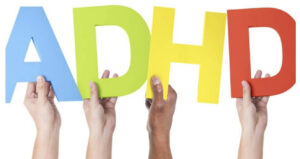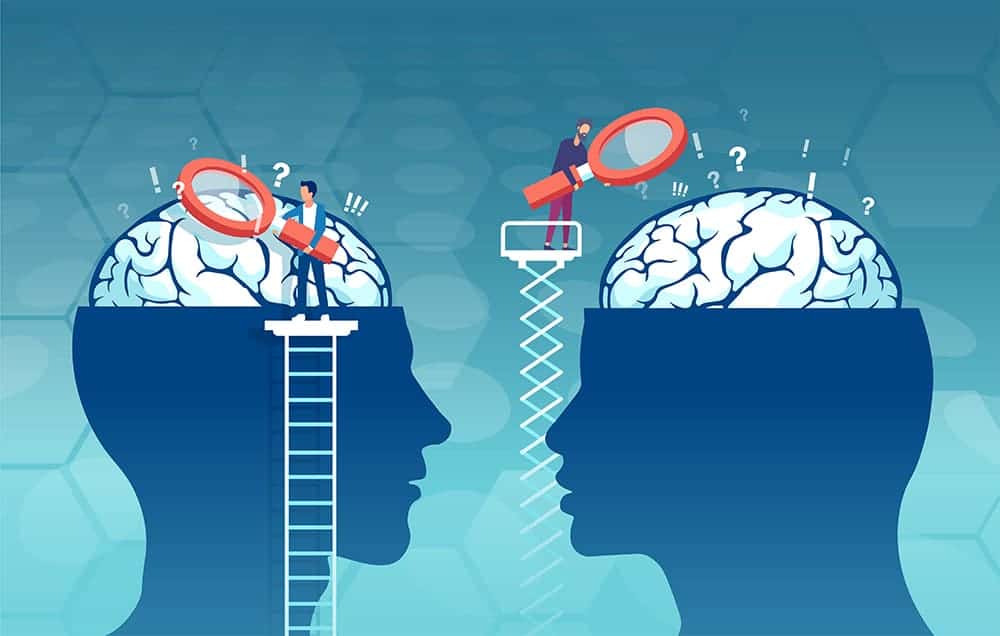Do you have trouble staying focused? Are you constantly fidgeting? Do you find it hard to stay on task? If so, you may have ADHD. Attention Deficit Hyperactivity Disorder is a condition that affects millions of people in the world and can cause a wide variety of symptoms. In this blog post, we will discuss different types of ADHD and how to recognize them. We will also provide information on how to treat ADHD effectively.
Contents
What Is ADHD?
 ADHD is a mental disorder that can cause problems with focus, hyperactivity, and impulsiveness. Symptoms usually start before the age of six and can continue into adulthood. There are many different types of ADHD, which can make it difficult to diagnose.
ADHD is a mental disorder that can cause problems with focus, hyperactivity, and impulsiveness. Symptoms usually start before the age of six and can continue into adulthood. There are many different types of ADHD, which can make it difficult to diagnose.
ADHD is also a very complex disorder, and many different factors can contribute to it. It is important to work with a qualified professional who can help you understand all of the different aspects of ADHD. People may also have other mental health conditions along with ADHD, which can make diagnosis and treatment even more complicated.
There are three main types of ADHD: inattentive type, hyperactive-impulsive type, and combined type. Each type has different symptoms and requires different treatment. It is important to get an accurate diagnosis so that you can receive the best possible treatment.
Different Types of ADHD

There are many different types of ADHD, and it can be difficult to identify which one your child has. It is important to work with a doctor or specialist to get an accurate diagnosis, as this will help you determine the best course of treatment.
There are three main types of ADHD: inattentive type, hyperactive-impulsive type, and combined type. Inattentive type is characterized by problems with focus and attention. Hyperactive-impulsive type is characterized by excessive energy and impulsive behavior. The combined type is a combination of the two previous types.
Inattentive Type
Inattentive type ADHD is characterized by problems with focus and attention. If your child has this type of ADHD, they may have difficulty paying attention in school or following instructions at home. They may also seem to be daydreaming a lot or spacing out. It is important to get an accurate diagnosis so that you can receive the best possible treatment. This type of ADHD is common in girls.
Hyperactive-Impulsive Type
Hyperactive-impulsive type ADHD is characterized by excessive energy and impulsive behavior. If your child has this type of ADHD, they may have difficulty sitting still or they may be constantly on the go. They may also have trouble waiting their turn or they may interrupt others often. It is important to get an accurate diagnosis so that you can receive the best possible treatment. This type of ADHD is common in boys.
Combined Type
The combined type of ADHD is a combination of the two previous types. If your child has this type of ADHD, they will likely have symptoms from both the inattentive and hyperactive-impulsive types. It is important to get an accurate diagnosis so that you can receive the best possible treatment. This type of ADHD is equally common in boys and girls. Sometimes there may be a fourth less common subtype called the overfocused type which is a combination of inattentive and hyperactive-impulsive types with symptoms of obsessiveness and rigidity.
Common Signs of Different Types of ADHD

There are many different types of ADHD, and each type has its own set of symptoms. Here are some of the most common symptoms of different types of ADHD:
Easily Distracted
One of the most common symptoms of ADHD is being easily distracted. If you have ADHD, you may find it hard to focus on one task for more than a few minutes. You may also find yourself constantly forgetting what you were doing or where you left off.
Hyperactivity
Another common symptom of ADHD is hyperactivity. If you have ADHD, you may feel like you’re always on the go and have trouble sitting still. You may also be very impulsive and make rash decisions without thinking them through first.
Inattentive Behaviour
If you have inattentive ADHD, you may find it hard to pay attention to anything for more than a few minutes. You may also space out often and daydream frequently. You may also have trouble following instructions and keeping track of details.
Constant Fidgeting
If you have ADHD, you may find yourself constantly fidgeting or squirming in your seat. You may also tap your feet or play with your hair when you’re bored or anxious. Sometimes there can be many different types of ADHD, and each type has its own set of symptoms.
These are just a few of the most common symptoms of different types of ADHD. If you think you or your child may have ADHD, it’s important to talk to a doctor or mental health professional to get a proper diagnosis. Once you have a diagnosis, you can work with your doctor to develop a treatment plan that can help manage your symptoms.
Impacts of Different Types of ADHD

Impacting a person’s ability to focus, pay attention, and control impulsive behavior, ADHD can look different from one person to the next. Some of these impacts are:
Impacts on Daily Life
One of the most common ways that ADHD affects people is by disrupting their daily lives. People with ADHD often have difficulty completing tasks, keeping track of time, and remembering important details. This can lead to problems at work, school, and home.
Impacts on Relationships
People with ADHD often struggle in their relationships. They may have trouble following through on commitments, maintaining eye contact, or listening to others. This can cause friction in both personal and professional relationships.
Impacts on Mental Health
ADHD can also take a toll on mental health. People with ADHD are more likely to experience anxiety, depression, and mood swings. They may also have difficulty regulating their emotions, which can lead to outbursts of anger or frustration.
Impacts Work
Another way that ADHD can impact a person’s life is by affecting their work. People with ADHD often have trouble staying organized, meeting deadlines, and managing time. This can lead to problems at work, such as missed assignments or being late for meetings.
While there are many different types of ADHD, they all share some common symptoms. These include problems with focus, hyperactivity, and impulsivity.
Most people with ADHD will have trouble with all three of these symptoms, but the severity can differ from person to person. For example, one person may struggle mainly with focusing, while another may be very impulsive and always on the go.
Treating Different Types of ADHD

The good news is that there are treatments available that can help manage all types of ADHD. Some of these treatment options are:
Medications
One of the most common treatments for ADHD is medication. Stimulant medications, such as Adderall or Ritalin, are often prescribed to help improve focus and concentration. Non-stimulant medications, such as Strattera, can also be effective in treating ADHD symptoms.
Behavioral Therapy
Behavioral therapy is another treatment option that can be very helpful for people with ADHD. This type of therapy can teach individuals how to better manage their time, set goals, and stay organized. It can also help them learn how to control impulsive behaviors and deal with frustration more constructively.
Parent Training and Education
For parents of children with ADHD, parent training and education programs can be extremely beneficial. These programs provide parents with the tools and information they need to help their child manage their symptoms and succeed in school and life.
Self-Care
In addition to medical and behavioral treatments, self-care is also an important part of managing ADHD. Getting enough sleep, eating a healthy diet, and exercising can all help improve focus and concentration. Taking breaks throughout the day, setting realistic goals, and avoiding distractions can also be helpful.
There are also several different support groups and resources available for people with ADHD and their families. These can provide additional information and help individuals connect with others who are dealing with similar challenges.
If you or someone you know has ADHD, it’s important to seek out professional help. With proper treatment, individuals with ADHD can lead happy and successful lives.
Conclusion
ADHD is a complex disorder that can present itself in different ways. It is important to be aware of the different types of ADHD and how they can manifest so you can get the proper diagnosis and treatment. If you think you or your child may have ADHD, talk to a mental health professional to get started on the road to recovery.
There are three main types of ADHD: inattentive type, hyperactive-impulsive type, and combined type. Inattentive type is characterized by problems with focus and concentration. Hyperactive-impulsive type is characterized by excessive activity and impulsive behavior. The combined type is a combination of both inattentive and hyperactive-impulsive symptoms.
Treatment for ADHD usually includes medication, psychotherapy, and behavioral therapy. Medication can help improve symptoms of ADHD by increasing levels of dopamine in the brain. Psychotherapy can help patients learn how to cope with and manage their ADHD. Behavioral therapy can help patients change their behavior and develop new skills to deal with their disorder.
Hope this article was of help to you! If you are suffering from ADHD, you may seek help from Therapy Mantra. We have a team of highly trained and experienced therapists who can provide you with the tools and skills necessary for overcoming ADHD. Contact us today to schedule an online therapy or download our free Android or iOS app for more information.


